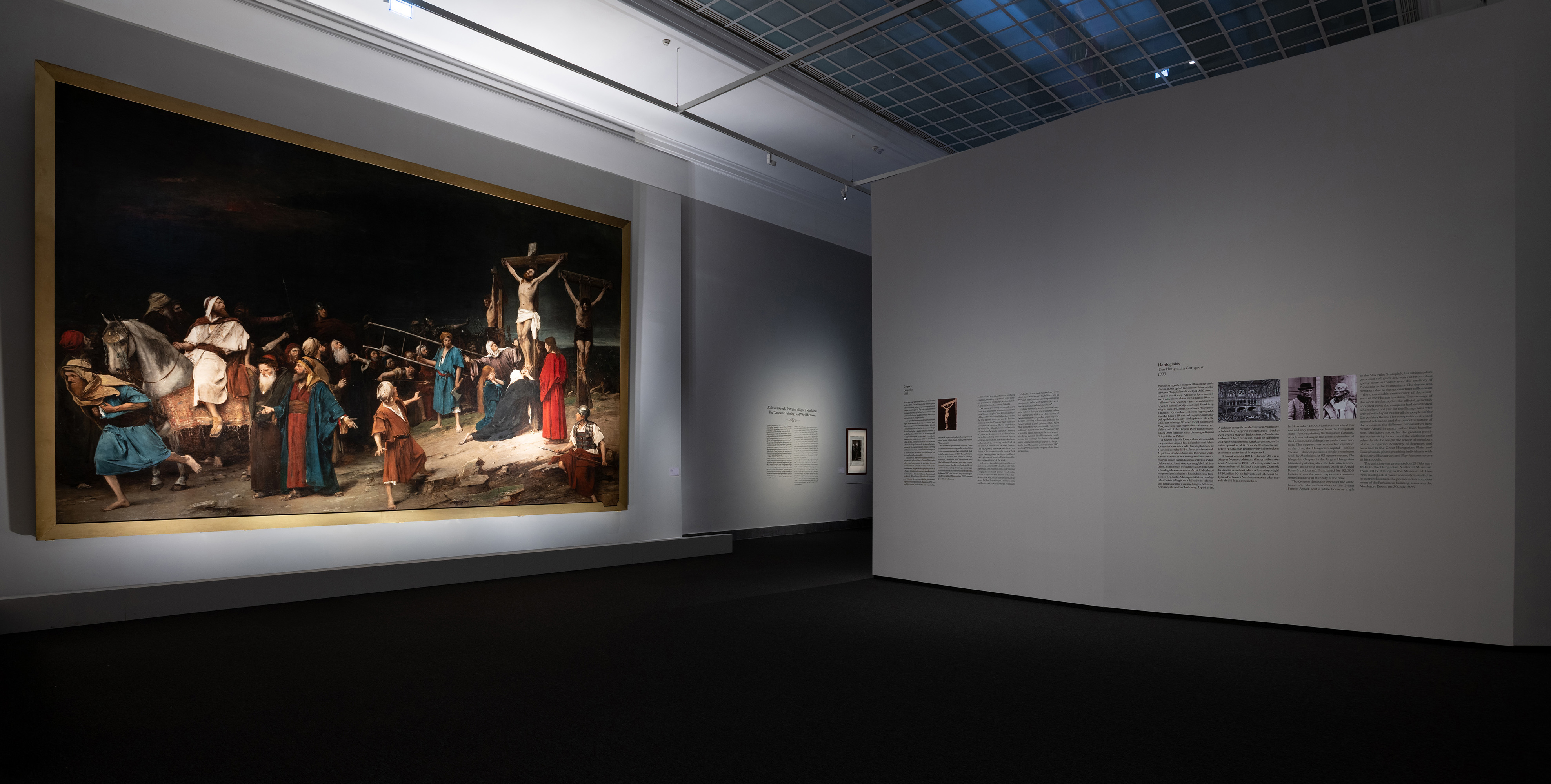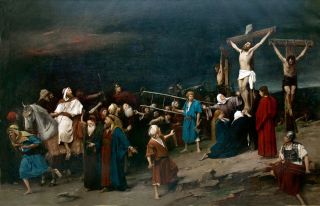One of the keys to Munkácsy's success unquestionably lies in the tours of his sensational paintings, especially the Christ trilogy. In the last third of the century, colossal paintings, regardless of their genre, enjoyed huge popularity throughout Europe, impressing audiences not only with their vast dimensions but also with their universal messages and dramatic storytelling. The term “sensational” refers to the reception of the works: these riveting paintings pre-empted the mechanism of action that the moving picture alone was capable of producing not long afterwards. Munkácsy's Christ struck a chord with people irrespective of national boundaries. Besides monumentality and a captivating subject, the persuasive power of these works lay in the lifelike quality of the painting, which demonstrated the artist's perfect command of technique. Behind the great success stood the art dealer Charles Sedelmeyer, who was clearly aware of the strategic significance of Munkácsy's works, and their impact on the artist's career and reputation.
It is owing to the Christ paintings - which were shown throughout Europe, and even in the United States during the 1880s, attracting over two million visitors - that Munkácsy quite literally achieved world renown. He went on to receive several Austrian and Hungarian awards, as well as two official commissions that marked the culmination of his career: The Apotheosis of the Renaissance, a ceiling painting for the Kunsthistorisches Museum in Vienna, and The Hungarian Conquest, intended for the Parliament building then under construction in Budapest. Thanks to these two paintings, Munkácsy entered the most important museum in imperial Vienna as a distinguished figure in European art history, while, with the commission for the Parliament building, the city of Budapest and the Hungarian state paid its respects to the prince of painters.
 Munkácsy
Munkácsy

